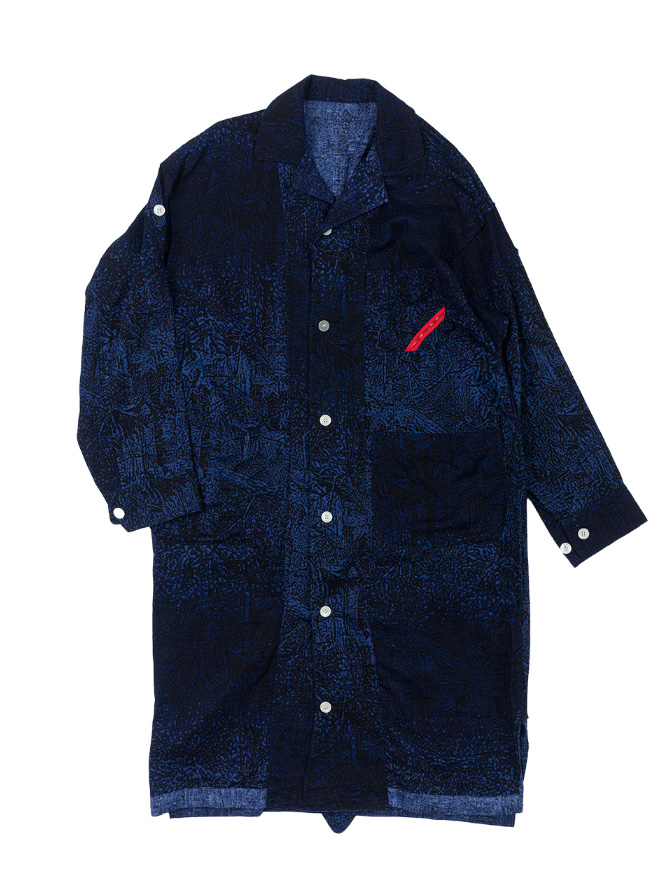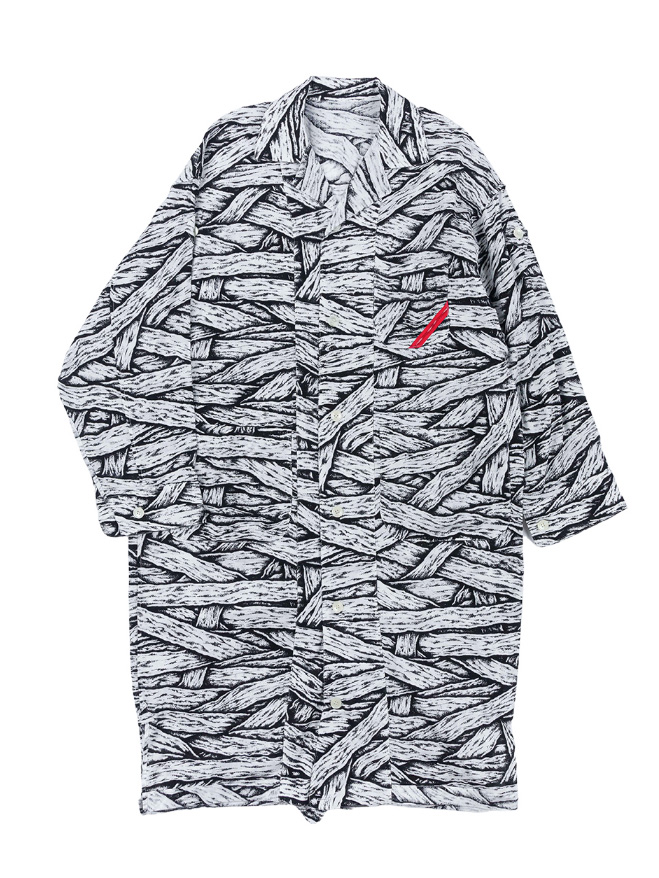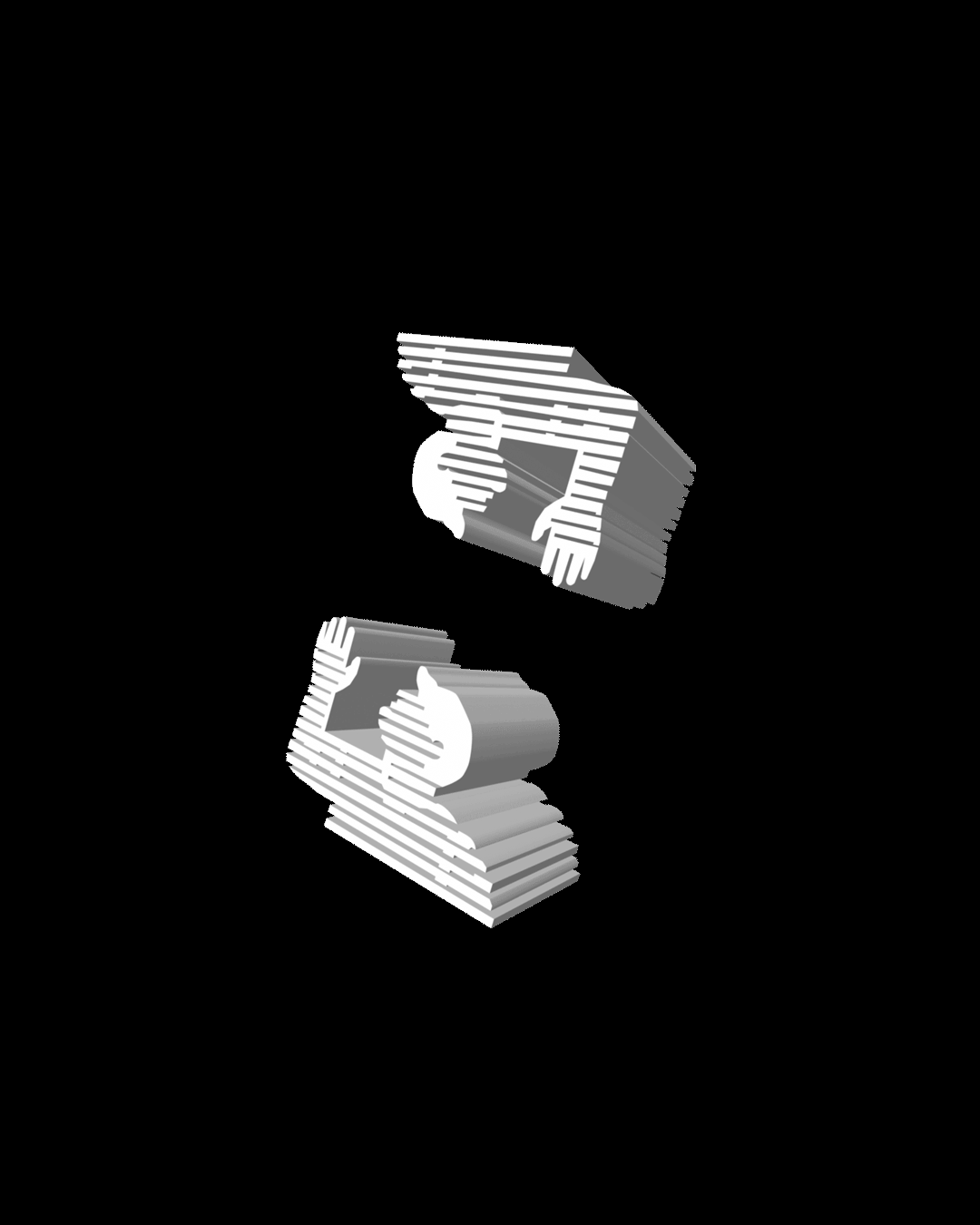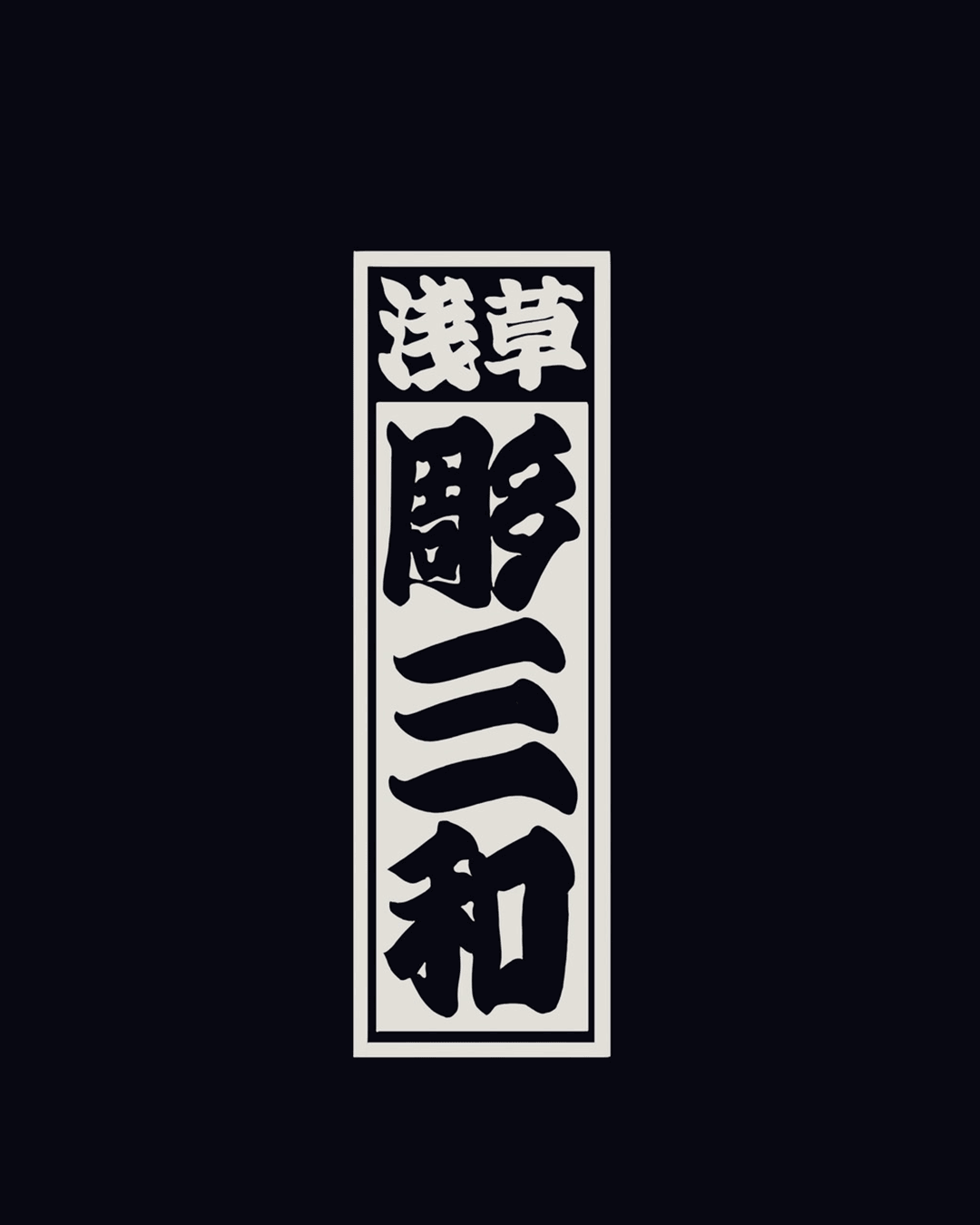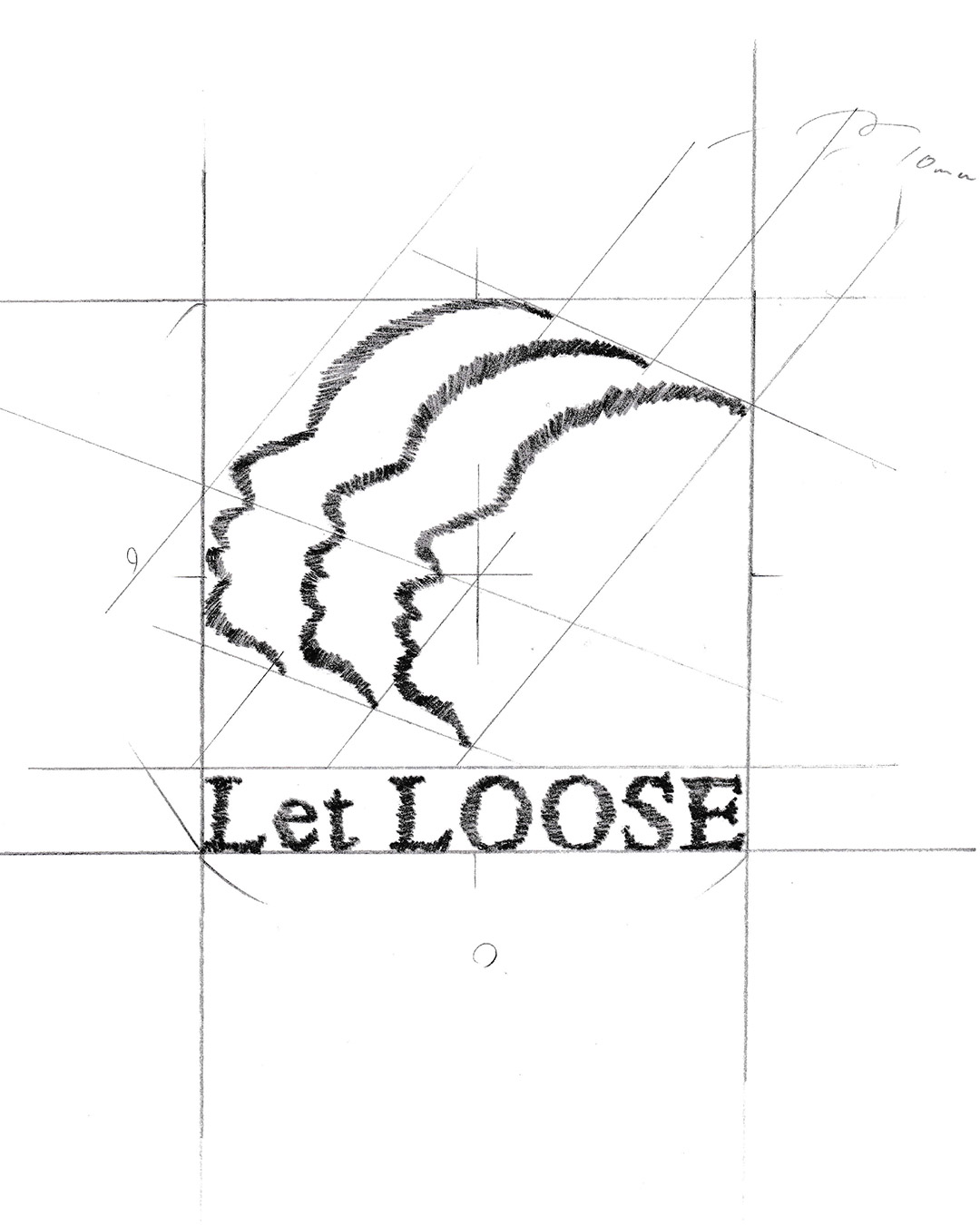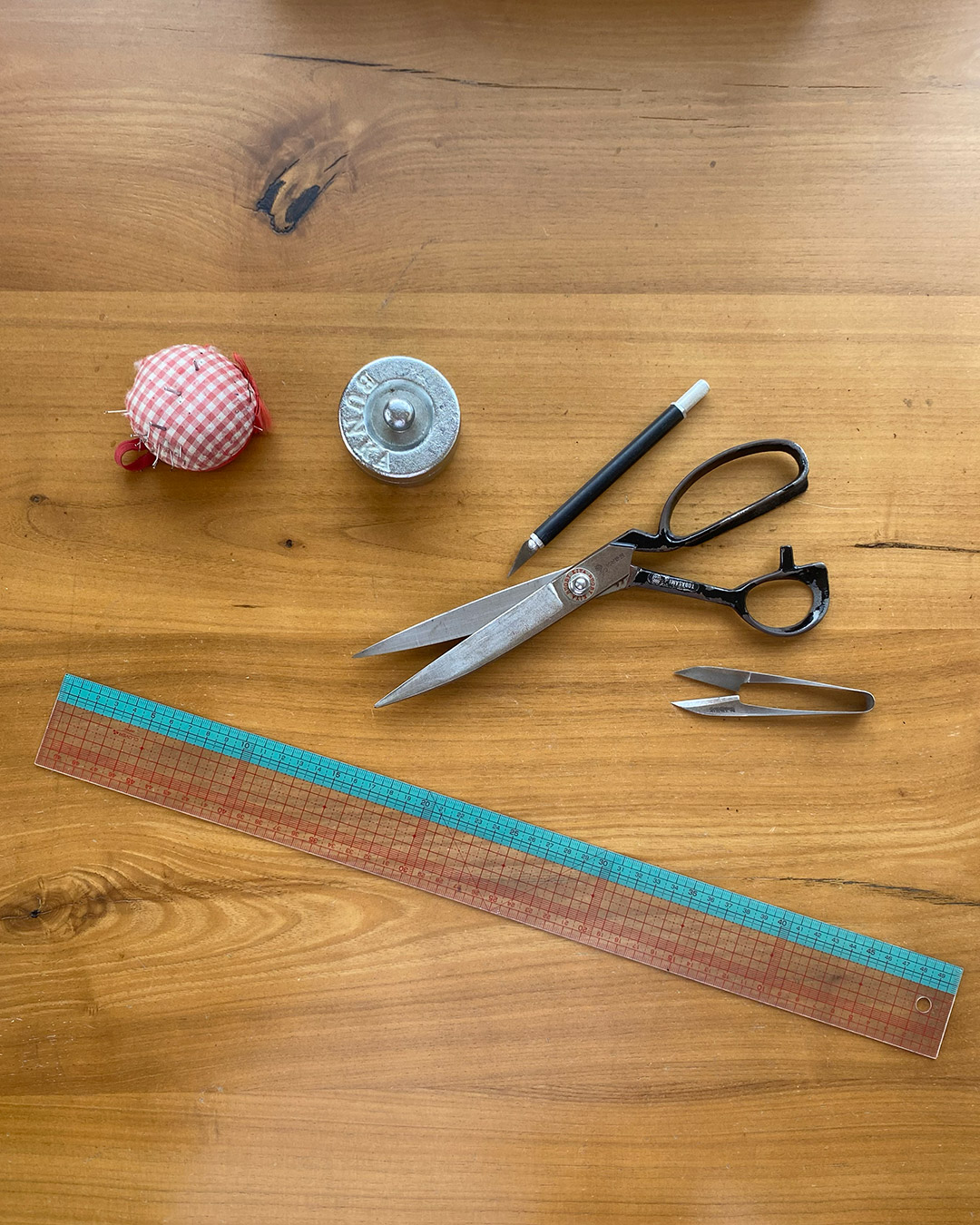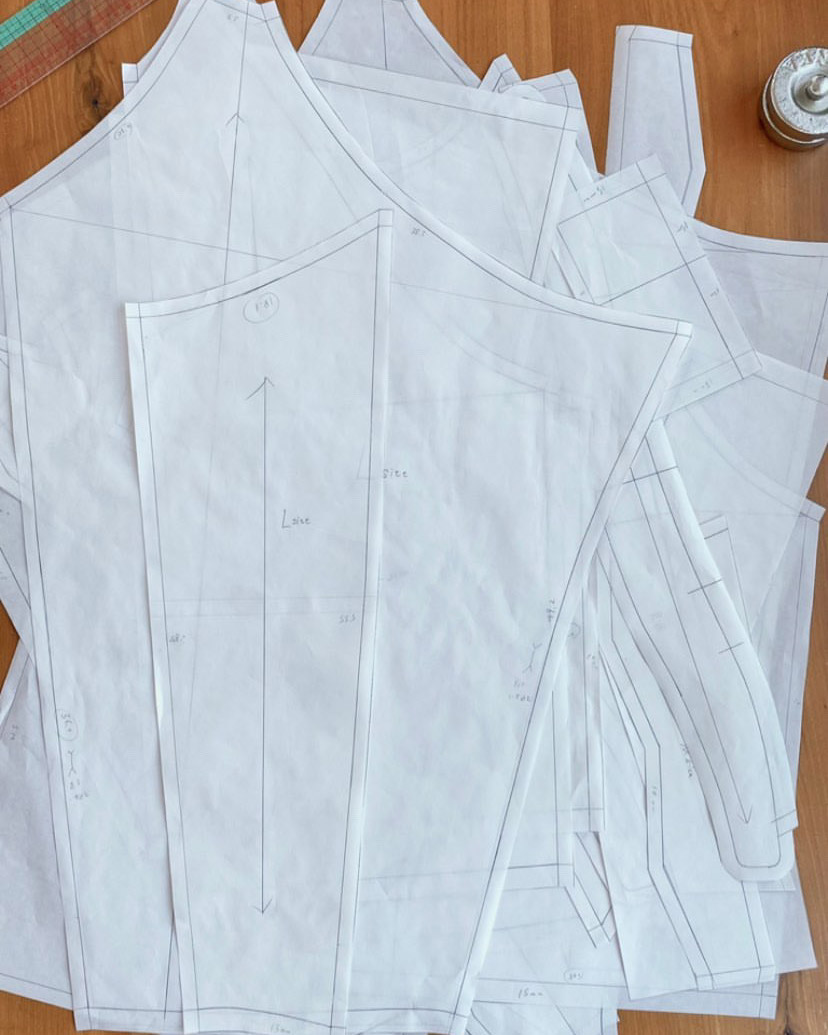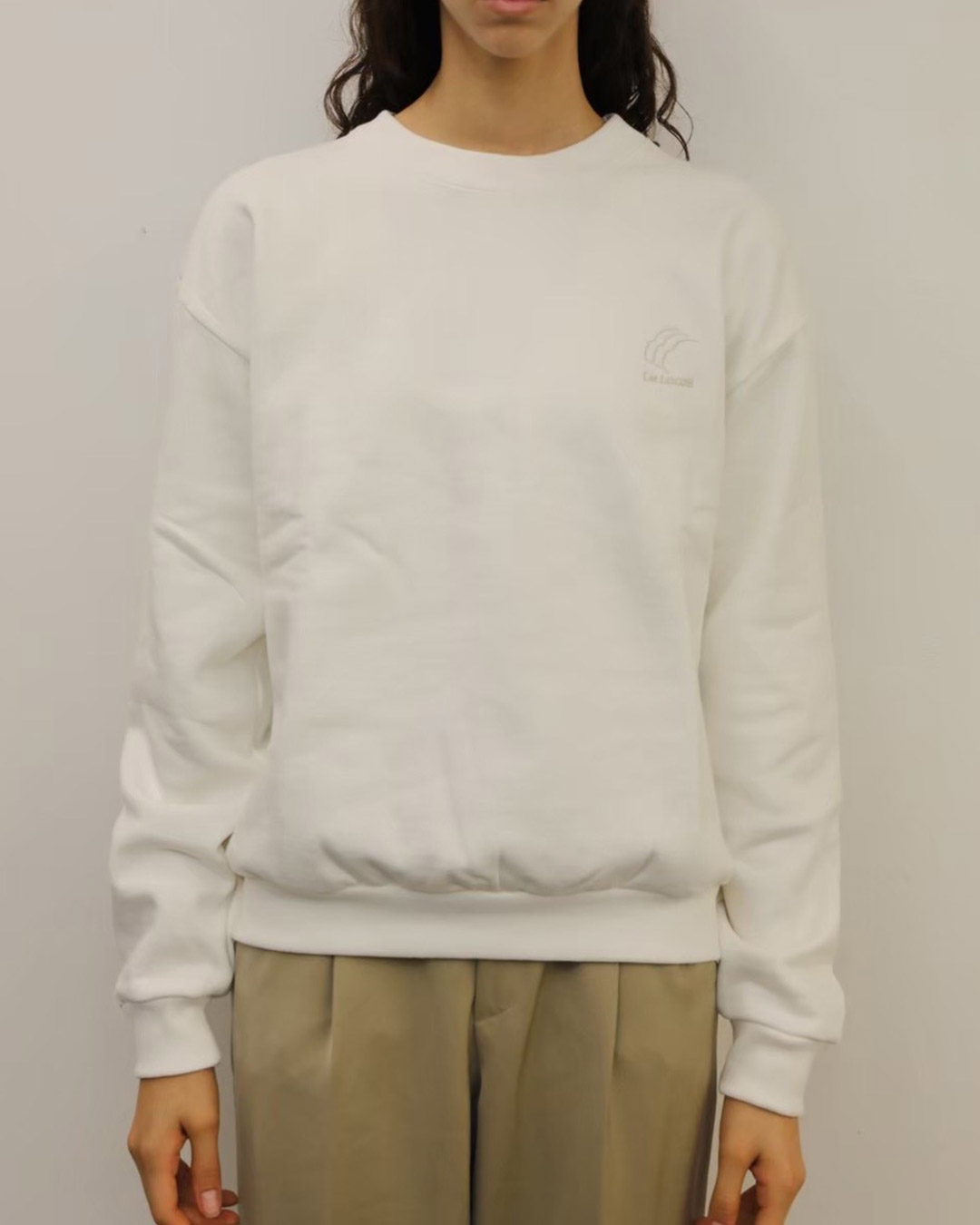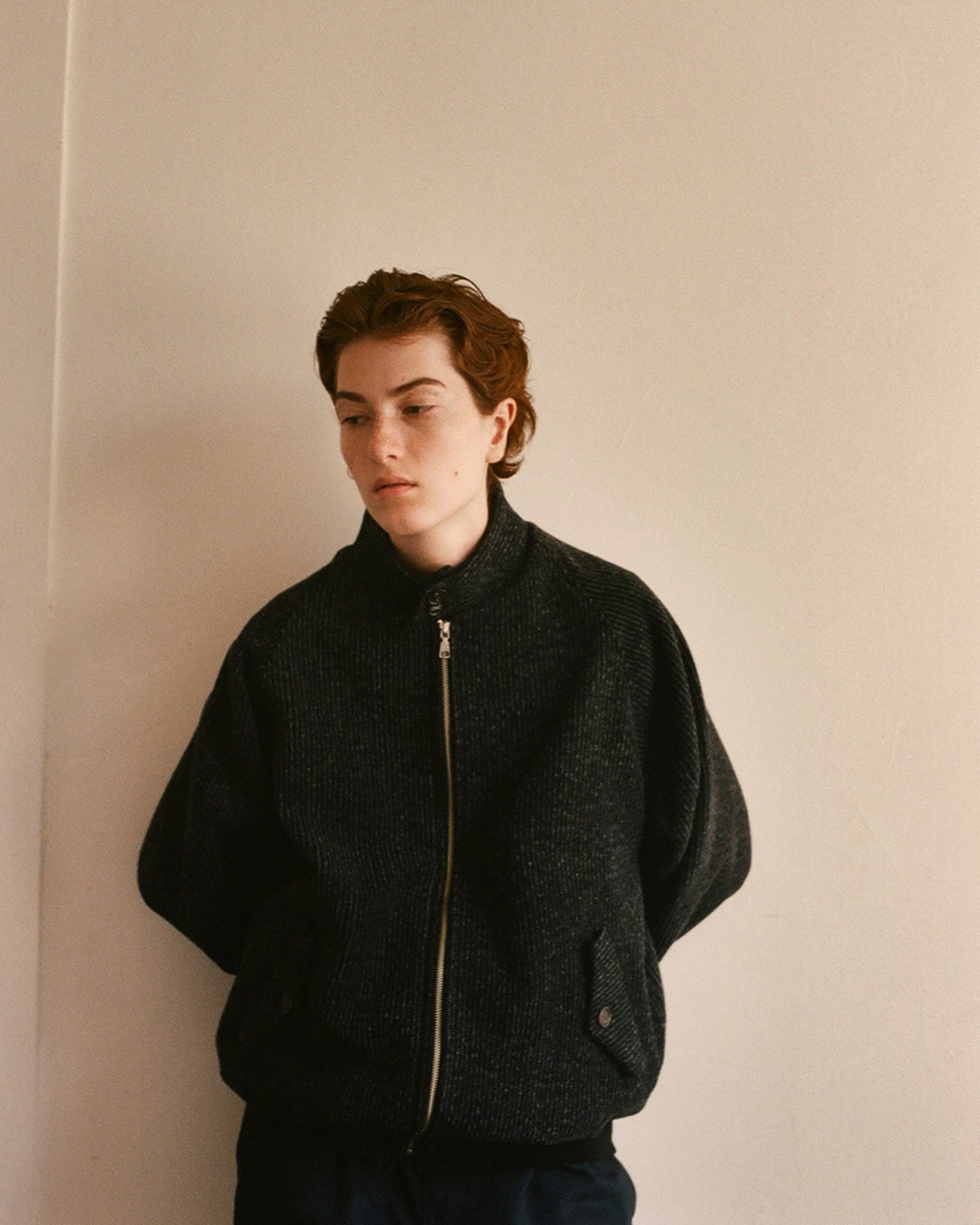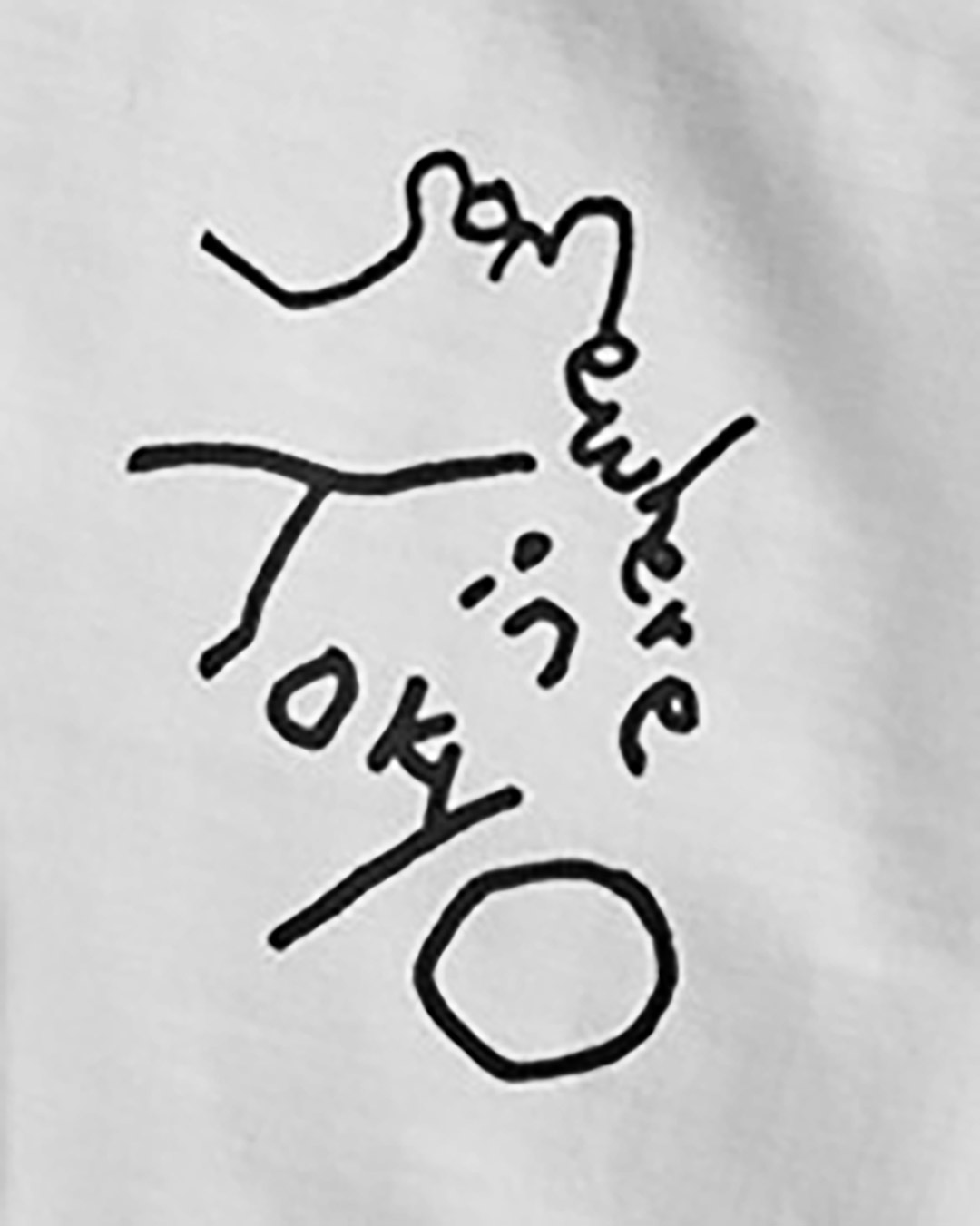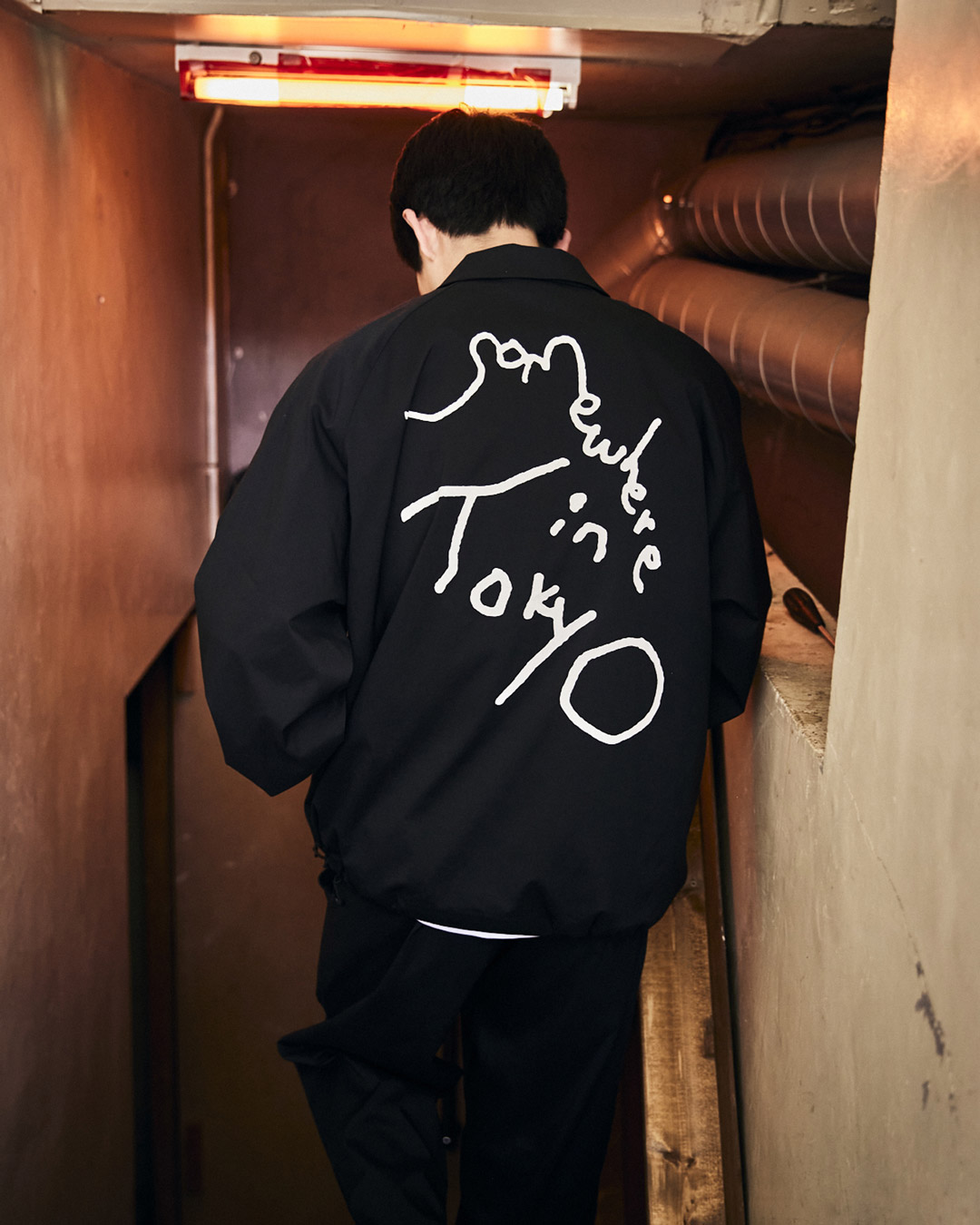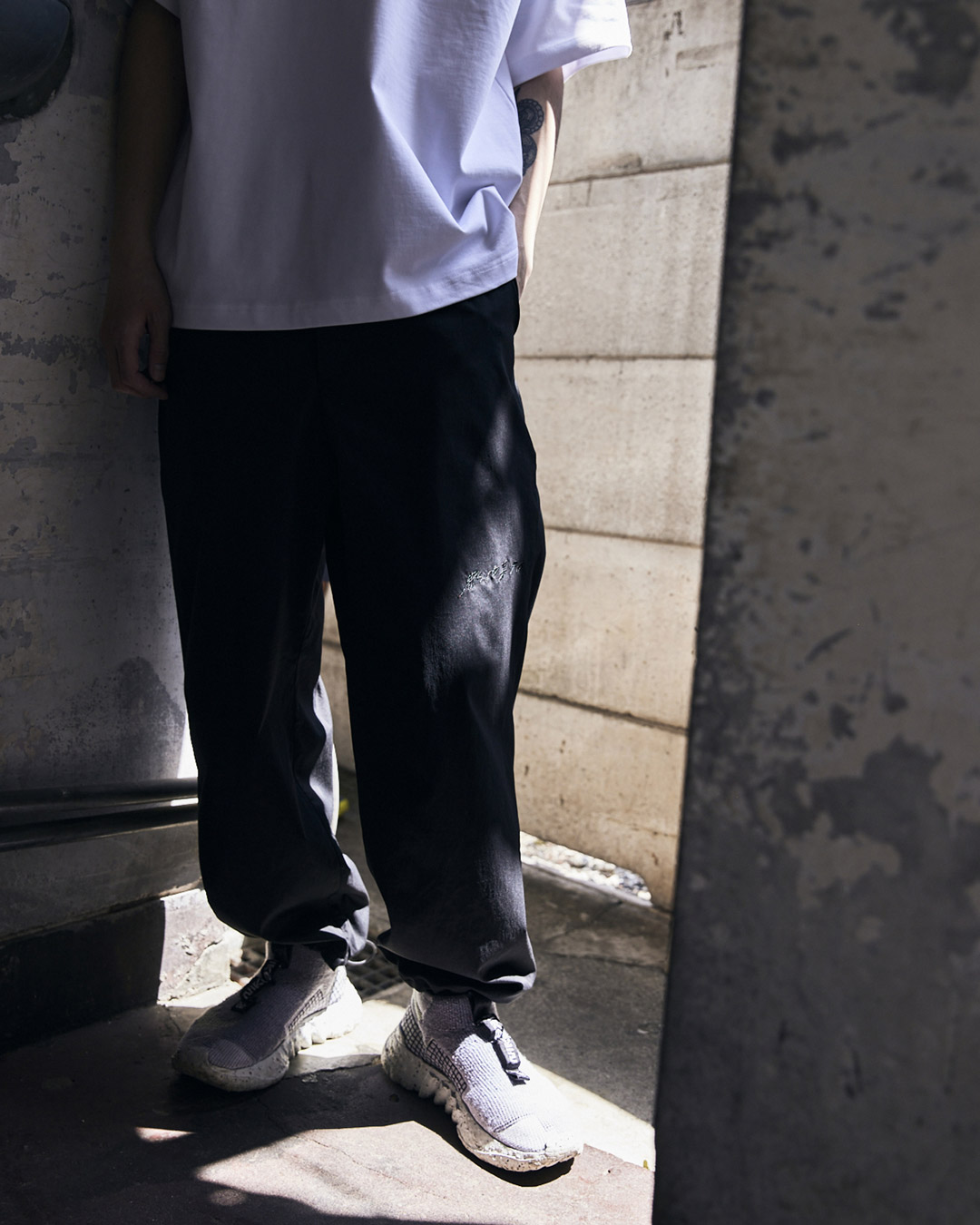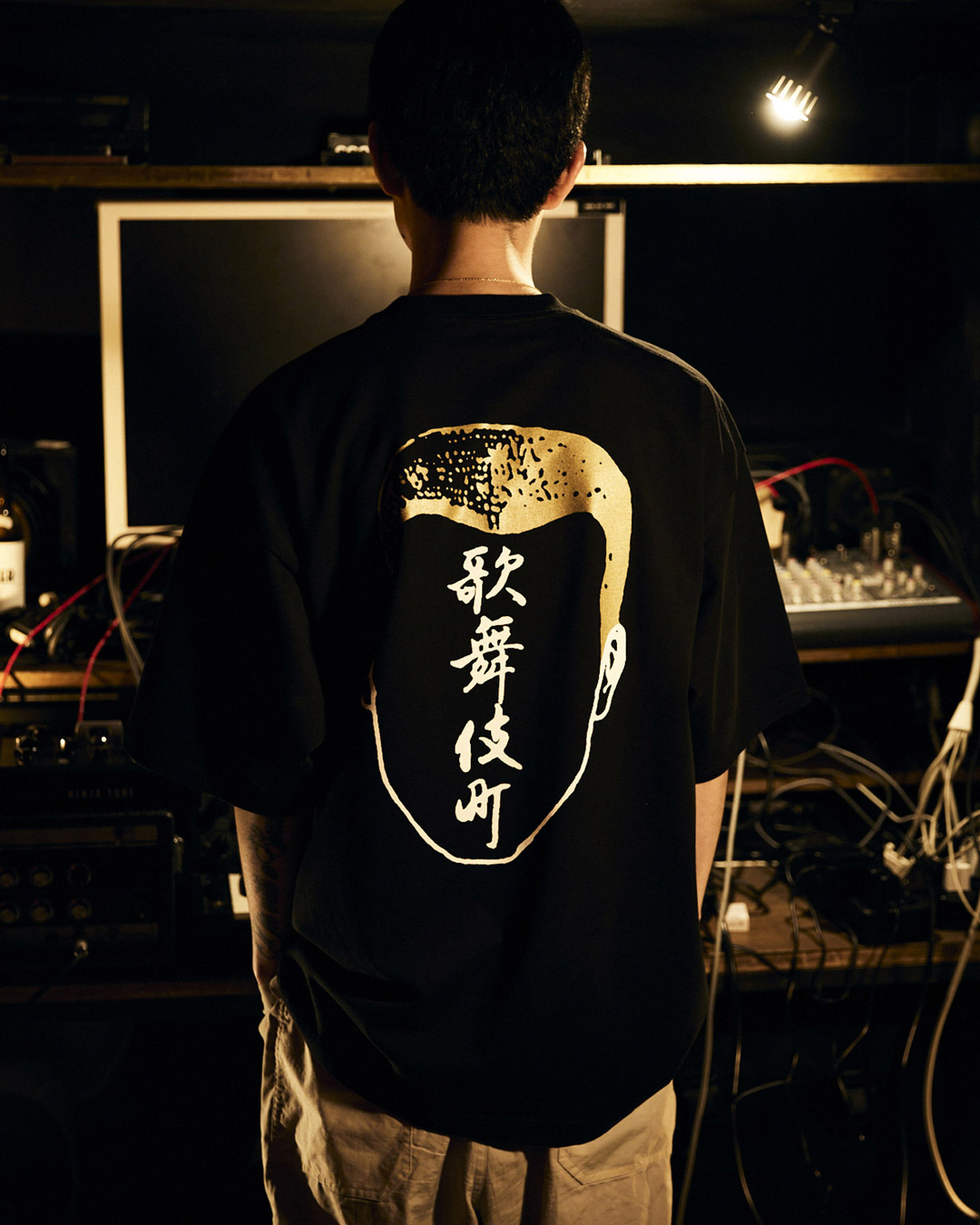
Update: 9th April 2021
Interview with
PHINGERIN
When I first visited PHINGERIN’s office, designer Tomoyuki Kobayashi spoke of how he sold the first pajamas he made the hard way, how he dove into business with the major select shops, and the difficulties he had when first establishing the brand, with laughter mixed into his words. However, when I listened deeper into his words, I realized that those rash experiences were not due to him not understanding precedent. His unwavering belief, where he does not follow anyone’s methods, is how he pioneered his unique path to reach where he is today. Starting from this spring, he will offer a button repair service for past season’s pajamas, and in order to get his true intentions, I had him retrace the origins of PHINGERIN to the present day.
Online Interview with Hiroyuki Ueyama, Feb. 12, 2021
First, I would like to ask about your background. When did you leave your hometown of Hiroshima to move to Tokyo?When I was twenty. After graduating high school, I found a job. Two years later, I left that company and went to Tokyo to enter Bunka Fashion College.
To quit your job to enroll in Bunka Fashion College—would you say that you had a strong interest in fashion originally?You could say so. From junior and senior high school, I always loved clothes. I wanted to enroll in a fashion school directly after high school graduation but my mother, who used to operate a now-closed boutique, was strongly opposed, telling me that it’s difficult to produce clothes, and that I had no idea of what reality is. So, I decided to work for an electrical construction company to see what the world was like. There, I was placed in the division that made buildings, and I thought it would be nice if I could do something like lighting design. Before I started work, I thought that I could do anything that had the word design attached to it, but reality was not that simple. Even saying that we were making just a building, that building’s area was so enormous. To design the lighting for a single floor, I needed to consider how to line the lights on the huge ceiling, how many centimeters above the floor should I place the switches, and at the same time I needed to consider where to place the wires for them. For me, to repeat that over and over for numerous floors felt overwhelming, and made me realize I’m not a genius. It was a huge shock to me, but once I got a hold of myself, if I were to take clothing as a single structure, it’s so much smaller than one building. I could design within my own category of vision, and the time needed for creation was especially short when compared to a building. Instead of creating buildings, if it was this small thing called clothes, then even someone as average as myself could do it. From that vague thought, I once again explained to my mother that I actually wanted to make clothes, and she somewhat supported me from that point onward.
Outside of fashion, could you tell us about what other cultures that influenced you afterward, such as music and art?I’d definitely say music, like punk rock and new wave. My older cousin taught me many things and I started listening in sixth grade, or my first year in junior high. I feel that the clothes and styles I saw in those scenes were the spark to light my interest in fashion.
Are these influences still reflected in your current ideas?In various ways. For example, the Worlds End that I am wearing today is influenced in the second or third degree by those interests.
I borrowed old magazines and I found out about the hip-hop unit, TINNIE PUNX, that Hiroshi Fujiwara and Kan Takagi were in, and honestly, though I was never directly excited by seeing the Sex Pistols wearing SEDITIONAIRES, the combination of bondage pants and Adidas jerseys that Hiroshi and Kan coordinated so effortlessly had a big impact on me even as a child. It was so much freer than the predetermined styles that punk is punk, and high fashion is high fashion. And, even more than just enjoying the mix-up, I think from that point onward my habit of choosing clothing by infusing my feelings and essence of the situation began to take root.
I’ve heard that as a brand PHINGERIN started with pajamas. Could you tell us more about the circumstances of how you established the brand?Before I even got to the point of my decision to make pajamas, I already had a strong desire within myself to make a “brand”. I felt that in the countless brands in the world, they existed in two broad categories: “real brands” and “something that looks like a brand”, and I wanted to make a real brand. So when I researched what a “brand” is, I found out that it had its roots in branding, where farmers burned their mark onto the cattle and pigs they owned. Branding isn’t great for the animals, but the roots were there, as a mark of the quality of the efforts they poured into raising their livestock, they branded the animals with their mark. That act of branding then developed into trademarks and other marks, and then turned into the tags and logos on apparel today. In other words, what I mean by wanting to make a real brand is to face myself and create things that I can deliver with the confidence that I will not disappoint my customers. I think logos are put on things because you have confidence in them. Even now, I believe that this order should never be mistaken. I didn’t want to make something first based on a logo, but the clothes comprising it were unexpectedly mediocre or were an imitation of something. The construction of the clothes or their quality is not the only issue, I feel that it’s cool if the maker’s attitude and identity are put into it, and that’s what I consider a real brand. I’ve chosen my clothing from junior high onward from this point of view, and if I were to make a brand, I want to make things that I could brand with conviction as my own.
That was pajamas?In clothing, there are so many varieties, jackets, pants, shoes, accessories, and if I were to try to make all of them as a brand, it would exceed my capabilities—just like the buildings I spoke of before—and since I wouldn’t be able to see everything then the brand would be weak, and become “something that looks like a brand”. Settling upon a single item that had room for improvement yet I could reflect my category of originality—what I ended up arriving at from these thoughts was the pajama. At the time, I thought that made-to-order suits that fit to the body were cool, but they are difficult for ready-to-wear. But, I could have a some leeway if it were loose fitting pajamas, and there were not be any loss in value. Moreover, the design of pajamas hasn’t really changed much from the past. I would be particular about their comfort when worn, and applying details that would suit modern lifestyles, I decided to make pajamas in the fabric and construction I thought was good. To be honest, when I was a child I had surgery on my stomach, and before I left for Tokyo when I was 20 years old, I was hospitalized for around two months, so I thought I could also utilize the ideas I gained from those experiences. Pajamas were one thing that I could combine all the various elements of myself.
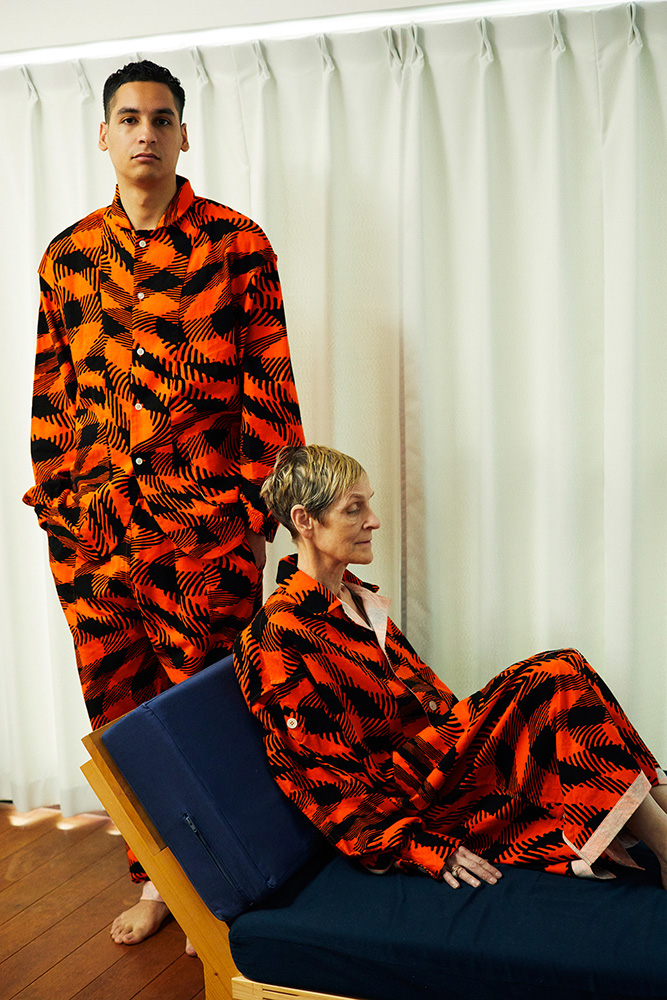

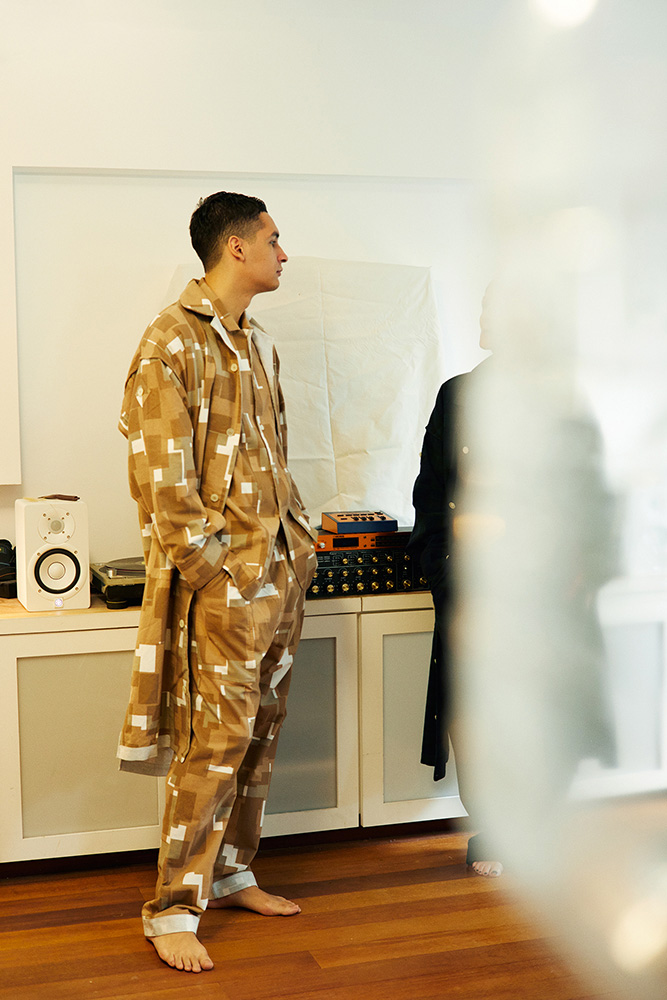

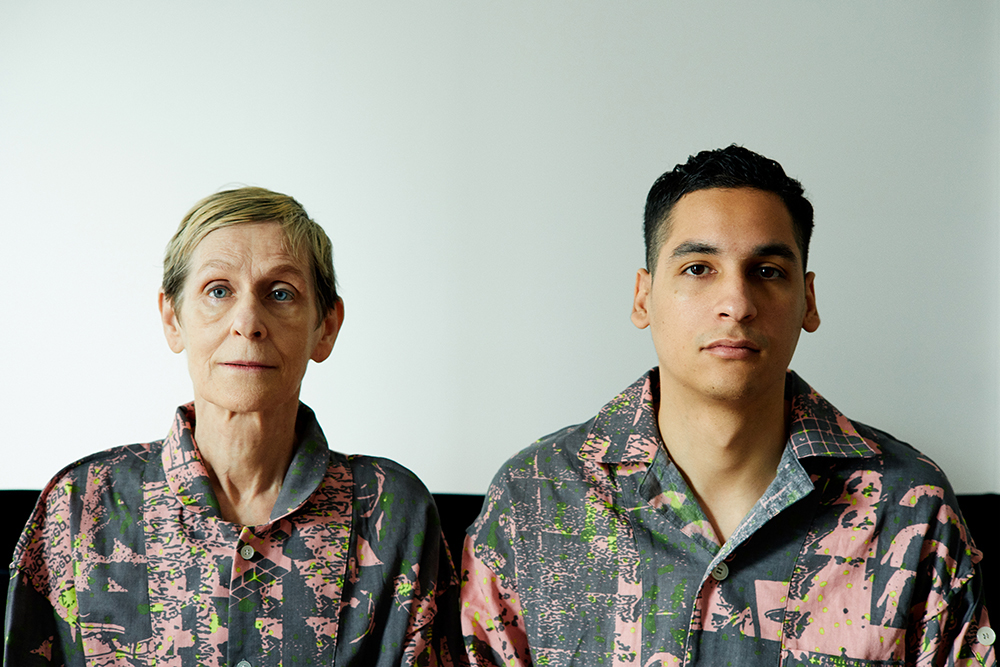
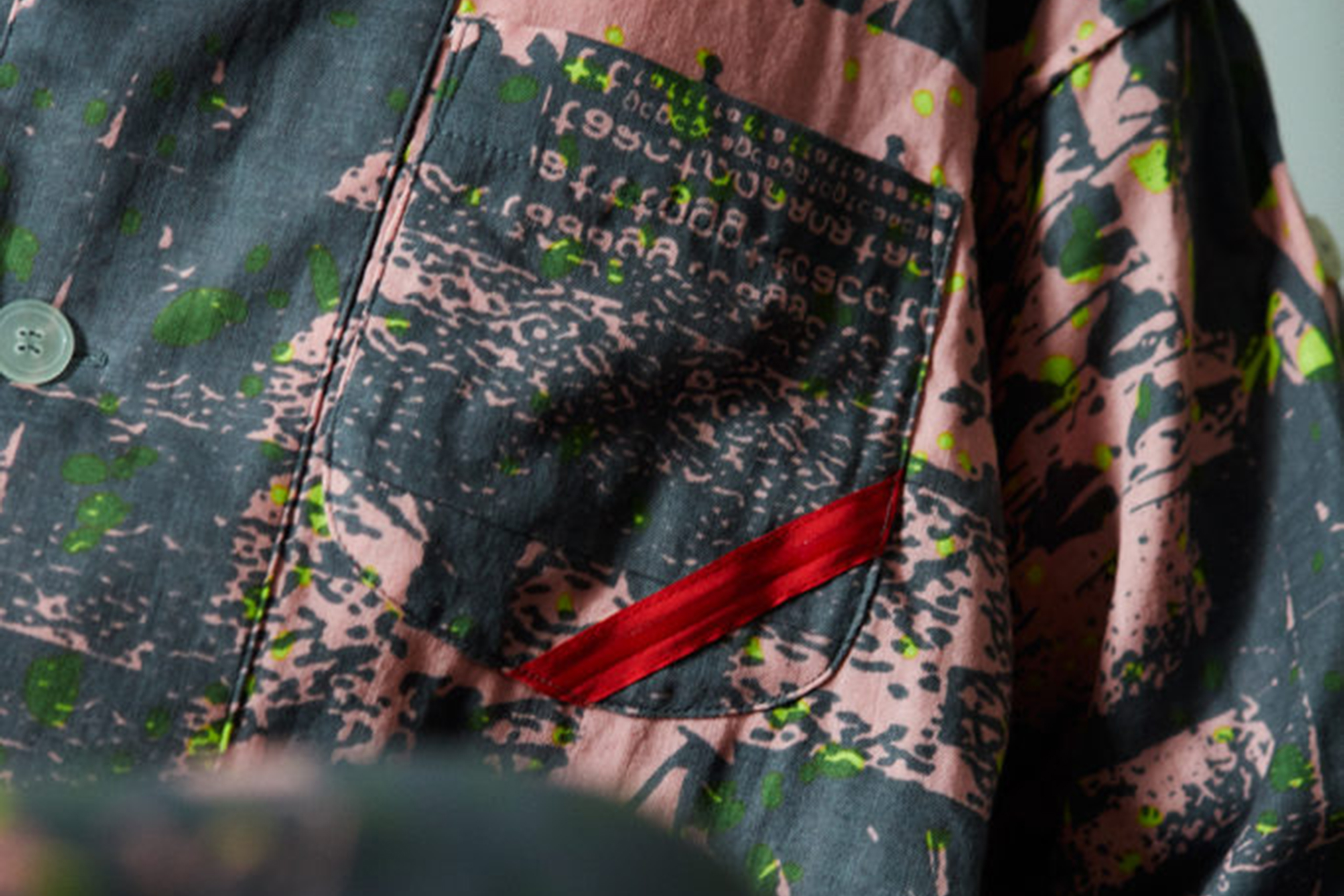
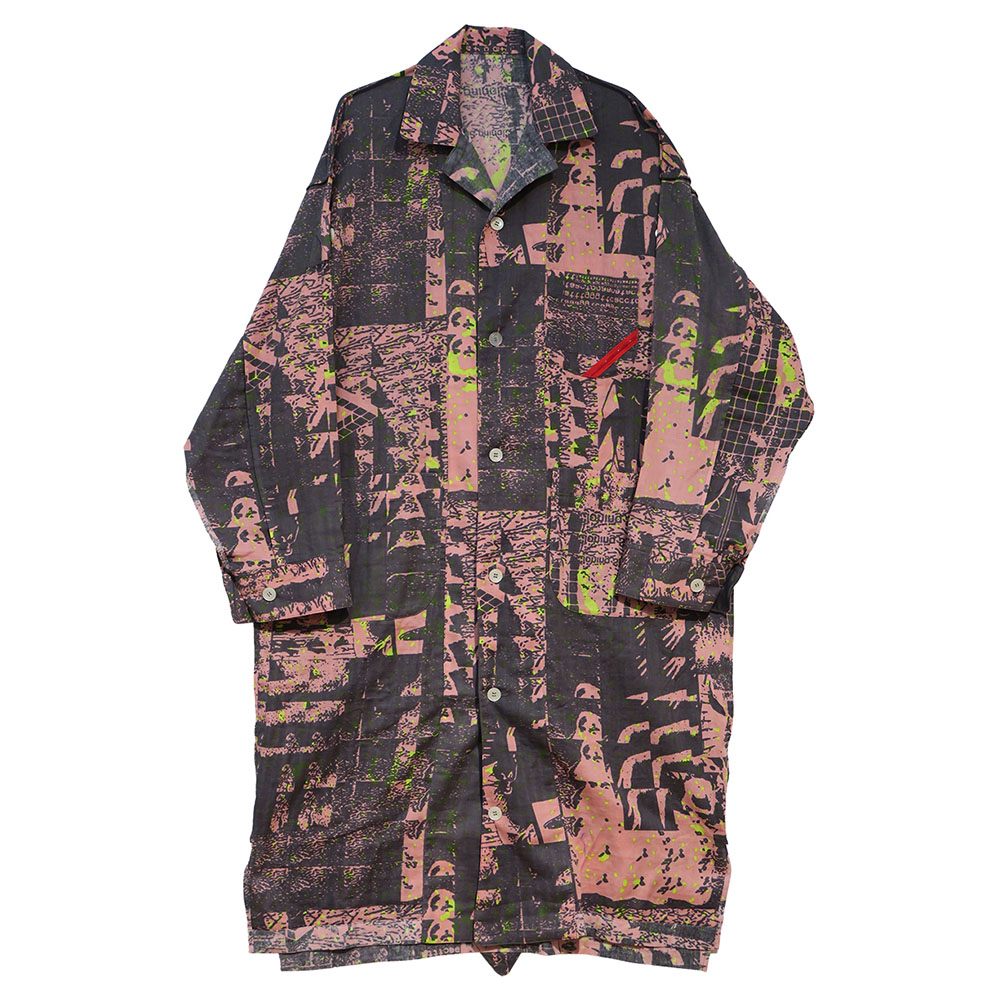
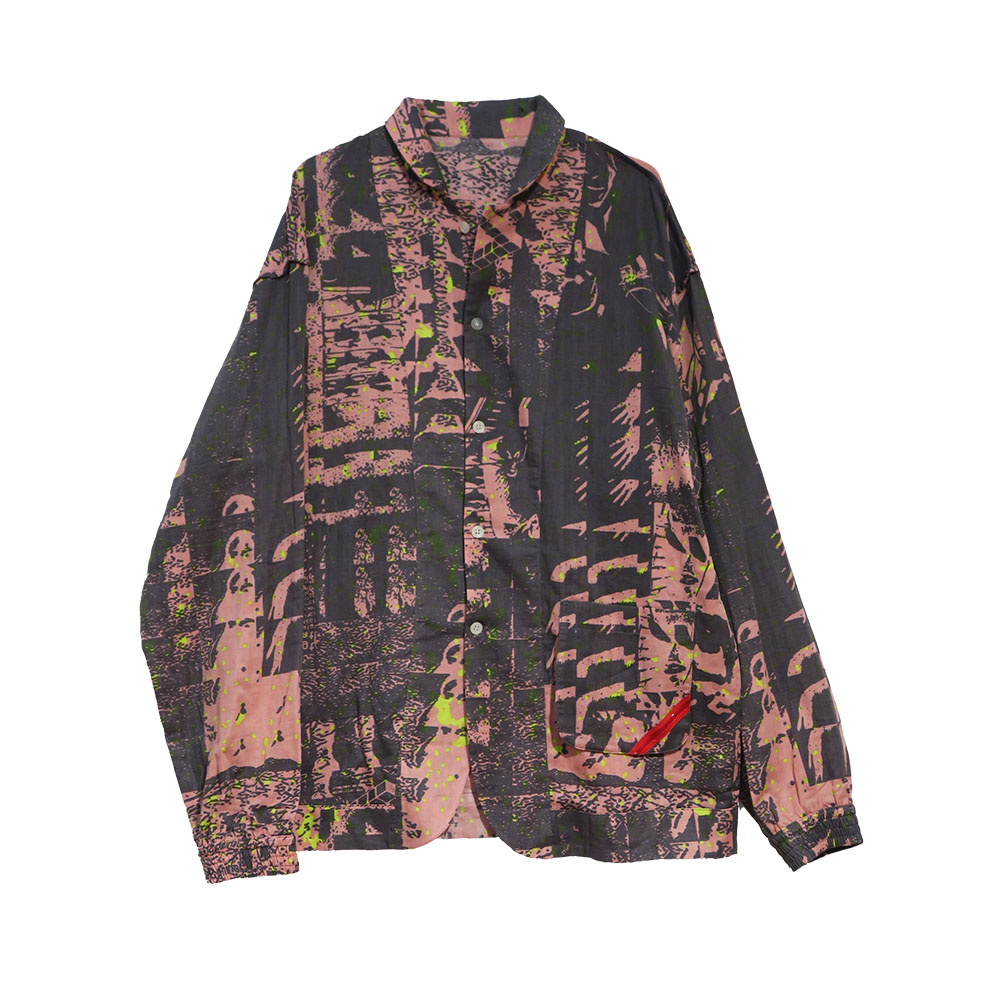
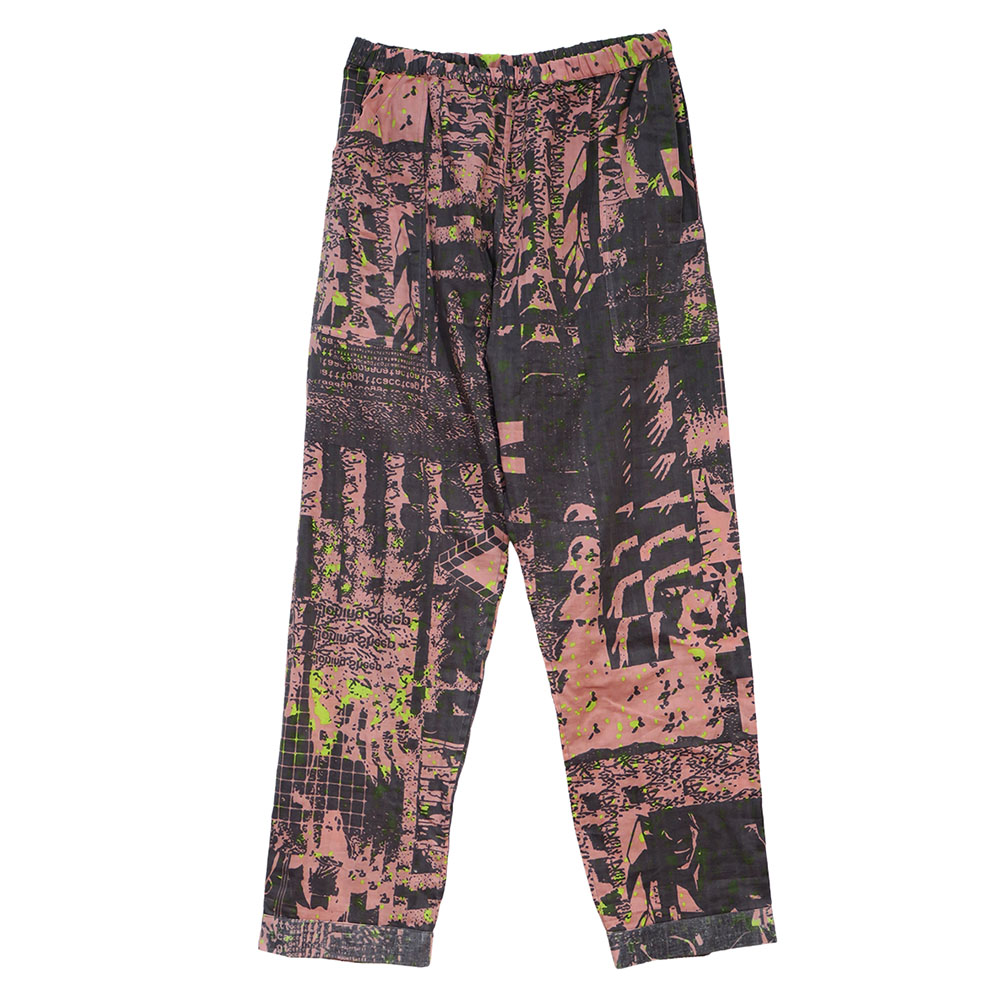
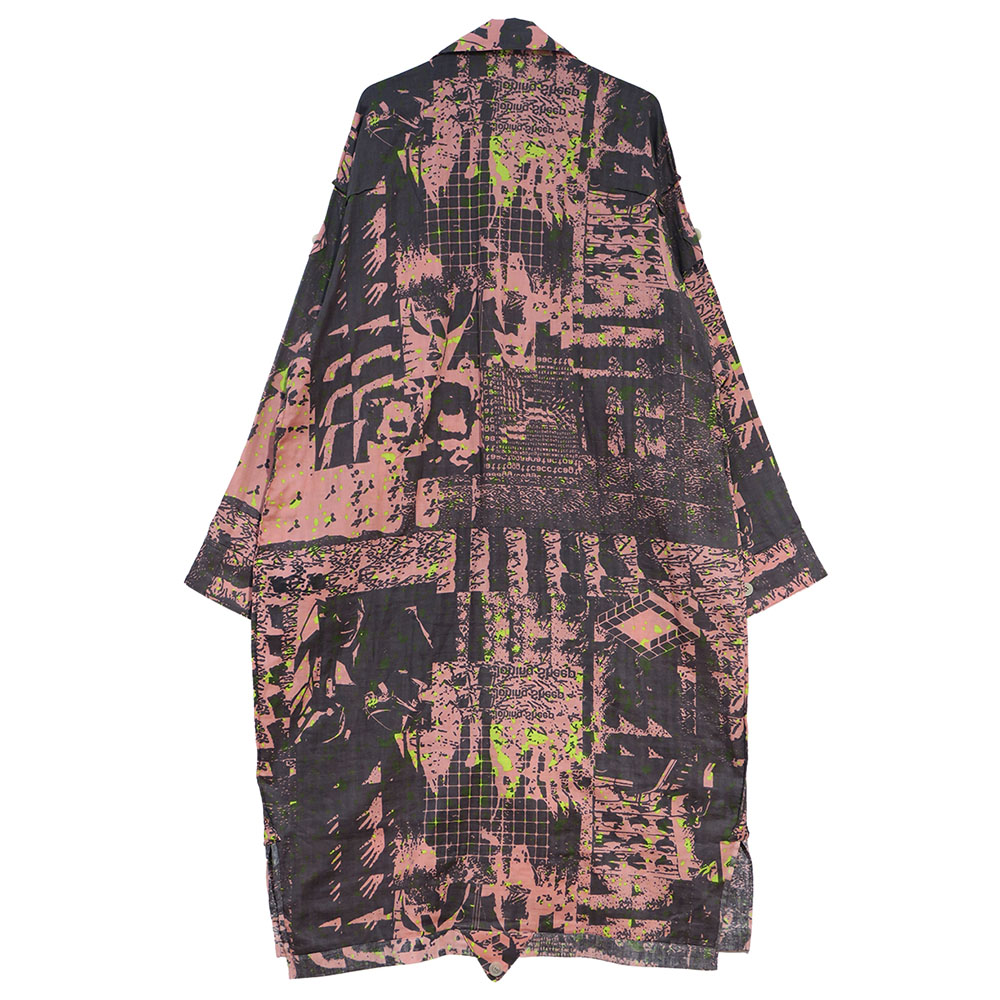
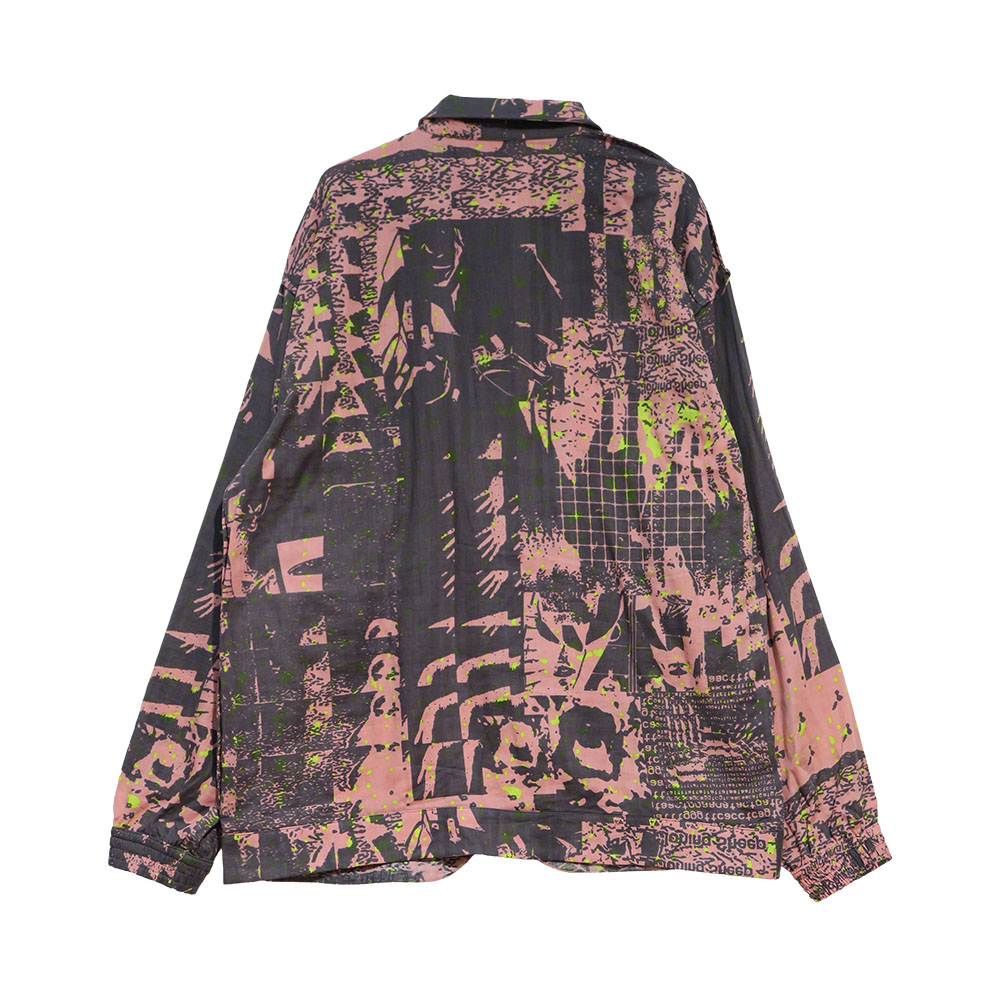

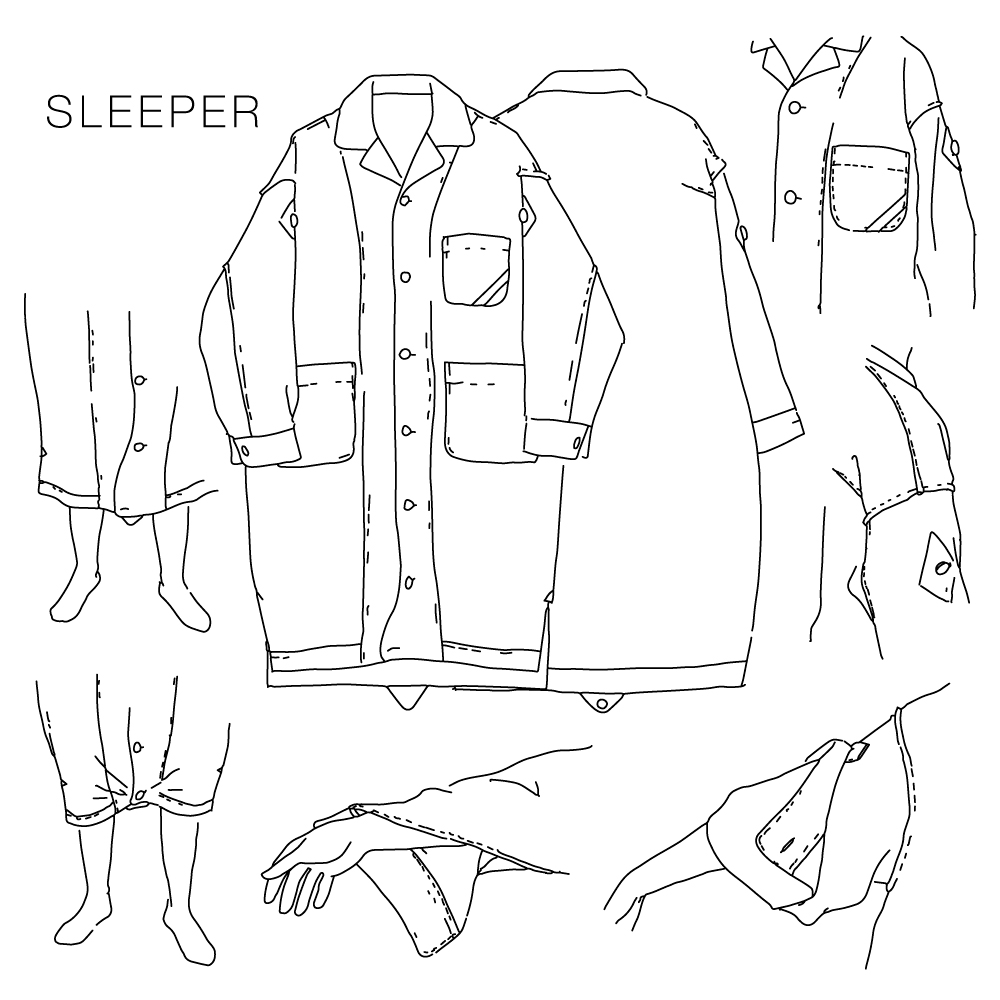

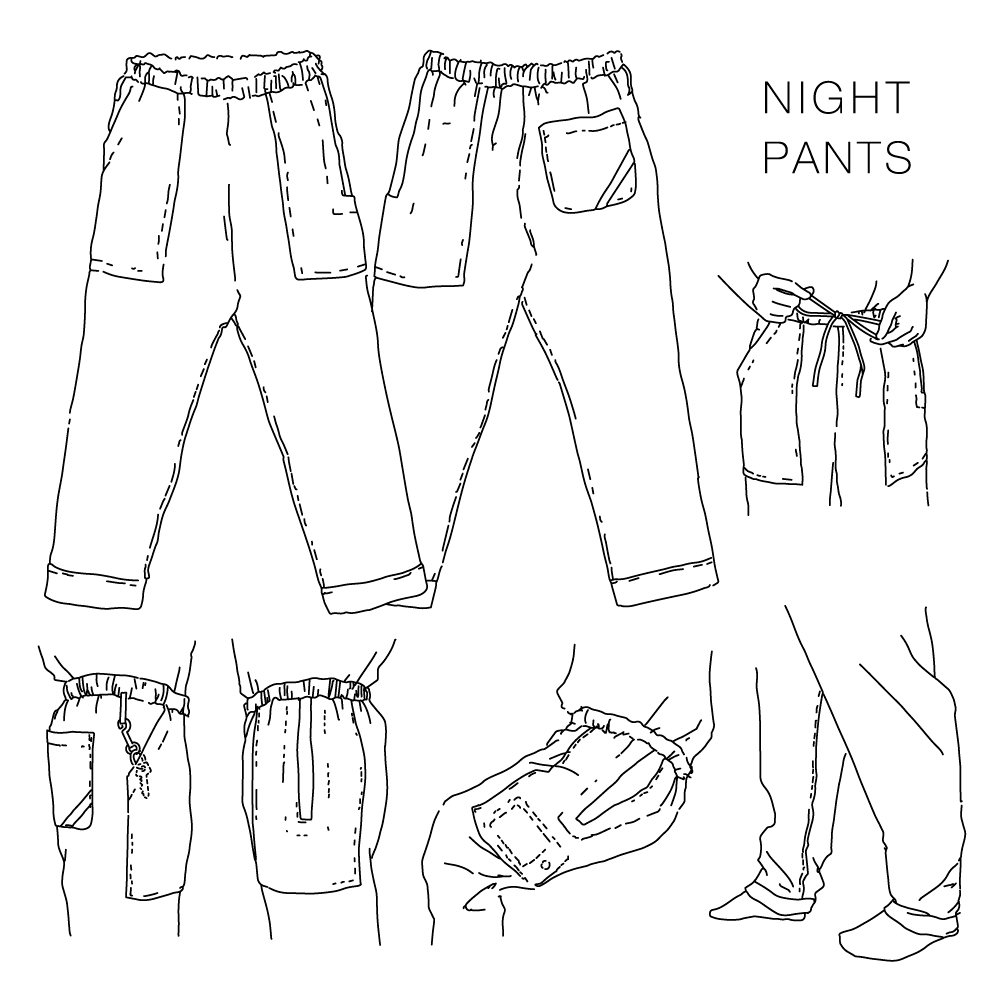
PHINGERIN
AW 20—21 PJ
AW 20—21 PJ
It’s quite unusual for the pajamas to be the starting point of a brand.There are many genres of fashion, like high fashion and streetwear, but pajamas stand alone like the ugly duckling, and that feeling of not belonging really came to fit me like a glove. Pajamas are often viewed as a home-wear or as lifestyle brand, but I had absolutely no interest in that. For me, all I wanted to do was make that one item—pajamas. As a brand, no matter how many other items besides pajamas I make, I only want to continue to make pajamas. Conversely, more than the design and shape of pajamas, I think that continuing to create pajamas itself is the overall branding of PHINGERIN.
PHINGERIN’s pajamas have a different image that those usually worn at home—is this something that you intended?Pajamas are generally sold as a top and bottom set, so I aimed to make it quite difficult to put together a matching top and bottom set, to send the message as PHINGERIN “don’t think you can sleep so easily”. Also, by selling them as separates, people can buy the ones they like, and will wear them out of the house. Regular clothes get thrown away once their appearance becomes worn out from wear outside; but if they are pajamas that are made with the highest comfort in mind, they will continue to be worn at home even if they look beaten up. That’s my hope when I decided on pajamas.
That also connects to sustainability.The word “sustainable” is now often used, but the first time I took note of that word was during my second year of high school. My father who worked in the construction industry often used those sort of terms, and he explained to me what they meant. Even when I look back on it from now, I remember that I understood the definition, and it was a term that I’ve appreciated from that point onward. Even if I don’t loudly proclaim that this is sustainable, I think that I can approach it just through making things that will be worn often over the long term.
I’ve heard that you will start a button repair service, was this also with the aim of encouraging long-term regular wear?That’s also the case, but to call it a “service” implies something different. Reattaching buttons when they’ve fallen off is a pain, and I thought that people might stop wearing them just like that. So, I plan to start by fixing the buttons of the PHINGERIN pajamas that are sent to me for repair, and sending them back.
Do you personally put on the buttons?That’s right. I’m not that skilled at it, but as a rule I’m the one to put them on. I will only ask my staff for help during the times that I cannot get around to it. I want to keep on doing this, and I intend to limit it to what I can respond to. There’s one season that remains in my memory where the buttons fell off rather easily, and as an sort of apology for that, I wanted to deal with it correctly. Also, another big part of it is that I actually want to see how much the pajamas that I have made have been worn.
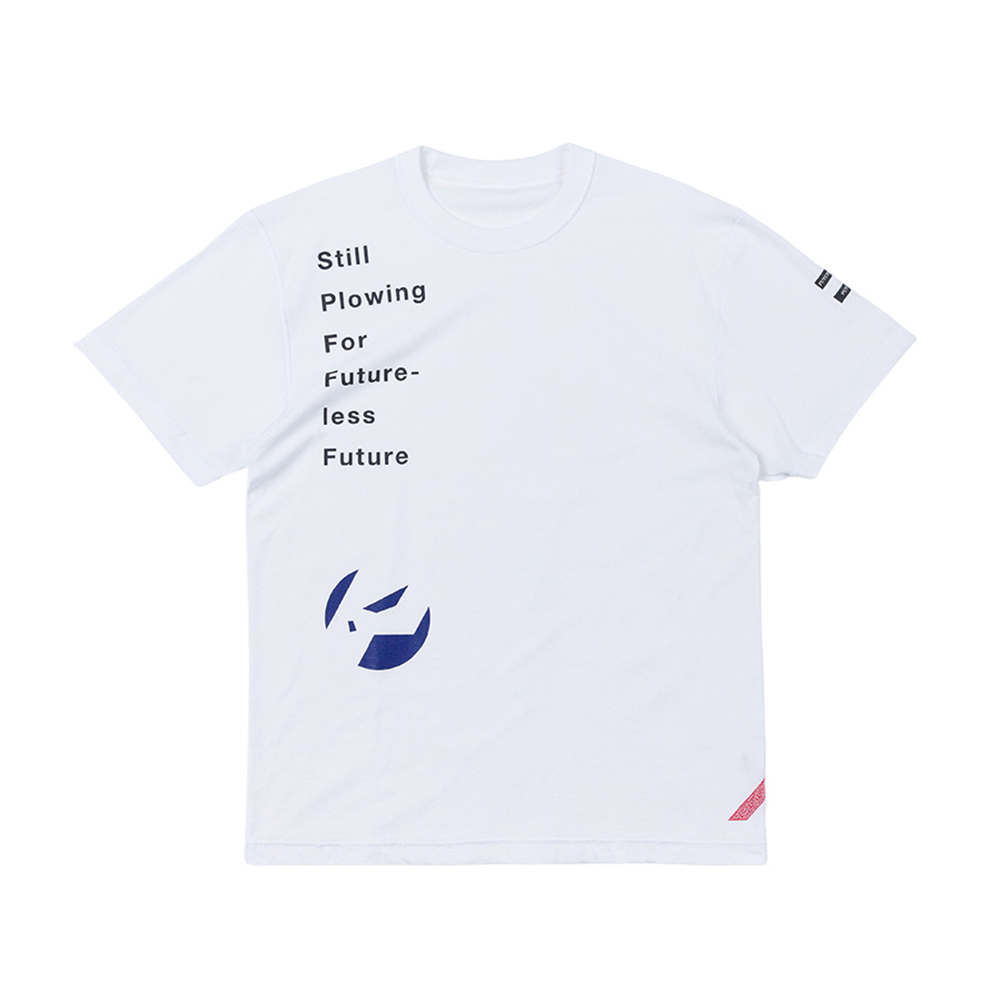

Through pajamas, you communicate with your customers, right?I’d be thrilled if it could be that way. It might be valuable to anticipate the future and make truly new things, but I want to confront the things that I have been making from 12 years ago in a new light. You could say that the act of replacing buttons is just one part of it. From about two seasons ago, I’ve started to use the phrase “Still Plowing For Futureless Future” on tees and other items, with the meaning of cultivating a futureless future. It’s often said also in fashion that you learn from the past but, an older friend of mine once told me about this way of thought from an indigenous people from parts of South America, where the past is in front of you, and the future is behind you, and this really resonated with me. And, when I projected that way of thought upon my living figure, I realized that I was walking backwards. The past builds up right in front of me, and I walk backwards into a future that I cannot see. I added the word ‘plowing’ to this since I thought that image of moving towards the future while your body faces your past, cultivating the ground at your feet, matched up with the brand’s philosophy and my creative themes. Reflecting on my past self, ideas and details become visible to me, and I have the present because of the experiences I’ve had until now. Because I do want to continue onward for a long time, I want to connect past matters to the present in the right way. Also, for the sake of that, I think I would like to once again face my works that line up in front of me like a skipping stone, and I would like to deeply consider what my brand is.
Up until now, PHINGERIN has sent out numerous pajamas into the world, but I was somewhat surprised to hear that the designs are only the three patterns of the shirt (NIGHT SHIRT), pants (NIGHT PANTS) and the dress (SLEEPER). However, the flannels and gauzes are selected for their desired comfort, there are various original all-over silk-screen prints for each season, and on top of the attention paid to the material and ply of the threads, there is also the waffle fabric which has plaid and stripe patterns woven into the material. Since each pattern is only released for that season, I think that are many collectors who are still searching for those designs regardless of the season. Applications for the button repair service are planned to be taken on the PHINGERIN online store, and even if the button is lost they will take care of it. As mentioned in this interview, in order to have the service continue constantly here on out, it will be limited to a number of people each month.
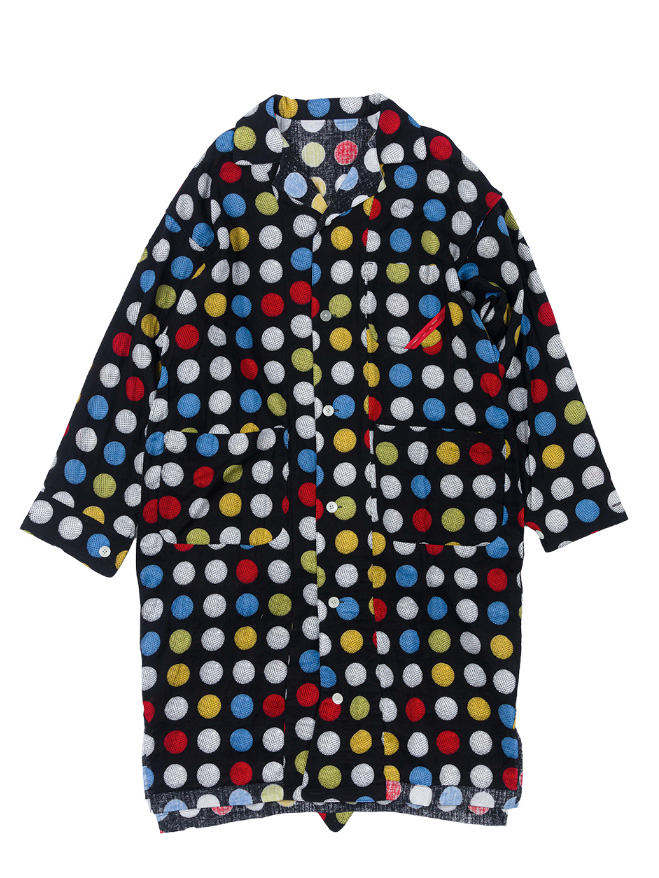
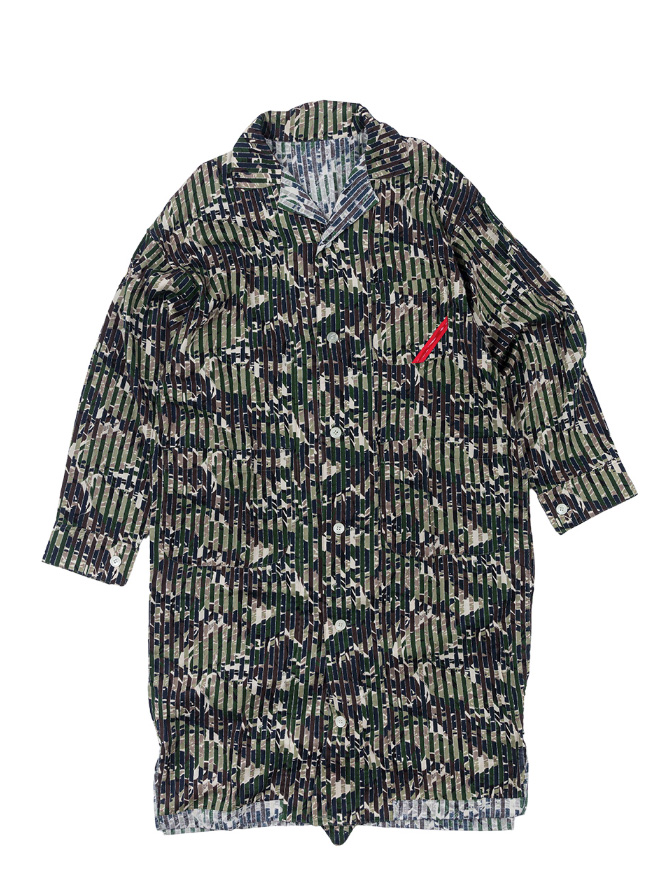

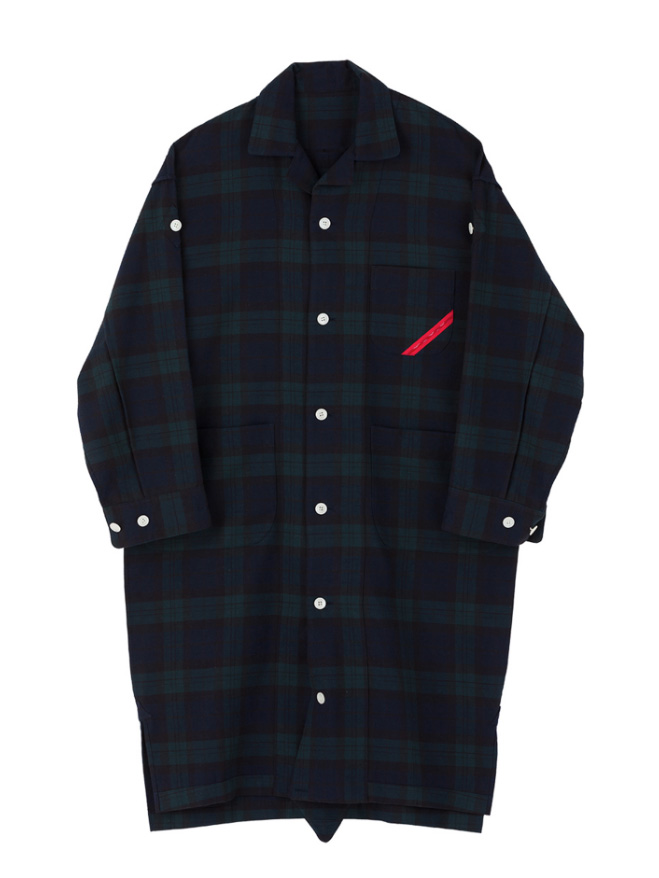
Established PHINGERIN in 2009 after graduating Bunka Fashion College, beginning from making simple pajamas from dress shirting fabric, sold by hand in the Harajuku area. With minor updates of design, the brand’s signature pajamas have been continuously released since the establishment of the brand without ever missing a single season. The method of pajama making had been expand to other designs other than pajamas, and under the current keyword “Still Plowing for Futureless Future”, a full range of casual wear from headwear to footwear has been released. As “finger made in philosophy (Phingerin)” represent, figer-made to be sensitive and detailed oriented even more than hand-made, also adding layers of message he wants to communicate or to share cultures he is influenced by through his designs, he takes care that each and every detail is a device that connects to the realization of the craftsmanship put into each item.
phingerin.com
@phingerin
